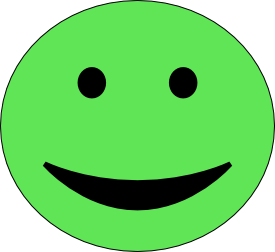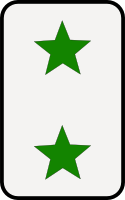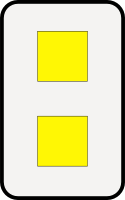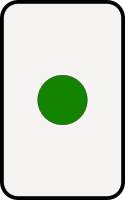Chapter 84. Concept Formation
Learning Objectives

Describe the value of concepts in thinking and problem solving.
Contrast the two major ways that concepts are formed and stored in memory.
Review
Review
Select the NEXT button to continue with the Review.

1. The world around us contains so many objects, events, and people that our working memory capacity quickly becomes overwhelmed. We simplify the world by forming concepts, which are mental groupings of things that are similar to each other, such as “cups” or “balls.”
Review
Review
Select the NEXT button to continue with the Review.

2. Concepts are powerful tools for thinking. For example, the concept "dog" allows us to consider the common characteristics of all dogs rather than to retrieve our memories of the individual dogs we have seen.
Review
Review
Select the NEXT button to continue with the Review.

3. Concepts are so useful that researchers consider them to be the basic building blocks of thinking. When we think, we manipulate concepts to solve problems or make decisions.
Review
Review
Select the NEXT button to continue with the Review.

4. Some technical concepts (such as "neuron") are formed by a definition or set of rules that specify the characteristics of a particular category. These rules allow you to determine precisely whether a new object fits into that category.
Review
Review
Select the NEXT button to continue with the Review.

5. Other concepts refer to more familiar categories such as “tree” or “fruit.” These concepts were probably formed in childhood by developing a prototype, or best example, for that category. Even though these concepts have formal definitions, we prefer to use our prototype to judge whether a new object is a member of that category.
Practice 1: Defining Concepts for Shapes
Practice 1: Defining Concepts for Shapes
Roll over each shape to see the set of rules that define that shape.
Concepts are mental groupings of things that are similar in some way. Some concepts are formed by learning the set of rules that define a particular category. The geometric objects shown here are all examples of the general concept of a polygon.
Pentagon: Any five-sided polygon. The sum of the internal angles is 540 degrees.
Rhombus: A four-sided polygon in which every side has the same length, and opposite sides are parallel. The sum of the internal angles is 360 degrees.
Polygon: Three or more straight line segments in the same plane, each connected end to end to form a closed shape.
Equilateral triangle: A three-sided polygon in which every side has the same length. The sum of the internal angles is 180 degrees.
Practice 2: Forming a New Concept
Practice 2: Forming a New Concept
Make a guess about this card. Then, select the “Show the Next Card” button.
You will see a set of 12 cards, one at a time. Some of the cards are jarabins and the rest are hoolugs. You must guess which cards belong to the category "jarabins," and you will get feedback after each guess. After all the cards have been displayed, we will explain the rule that defines the fictional concept "jarabin."

| Correct guesses | 100 |
|---|---|
| Errors | 100 |
Practice 3: Refining a Concept
Practice 3: Refining a Concept
Make a guess about this card. Then select the “Show the Next Card” button.
What if we came across a new problem that required us to reclassify some jarabins as belonging to a different category? Once again you will see a set of 12 cards, one at a time. Some of the cards are belladons, and some are hoolugs. You must guess which cards belong to the category "belladons," and you will get feedback after each guess. After all the cards have been displayed, we will explain the rule that defines the fictional concept "belladon."

| Correct guesses | 100 |
|---|---|
| Errors | 100 |
Quiz 1
Quiz 1
Drag each card to the gray area above the appropriate concept name. When all the cards have been placed, select the CHECK ANSWER button.
Quiz 2
Quiz 2
Complete each sentence about a concept. For each concept, indicate whether it is more likely to have been formed as a definition (set of rules) or a prototype (best example of the concept) by dragging each label to the appropriate gray area that completes the sentence. When all the labels have placed, select the CHECK ANSWER button.
Conclusion

Concept Formation







